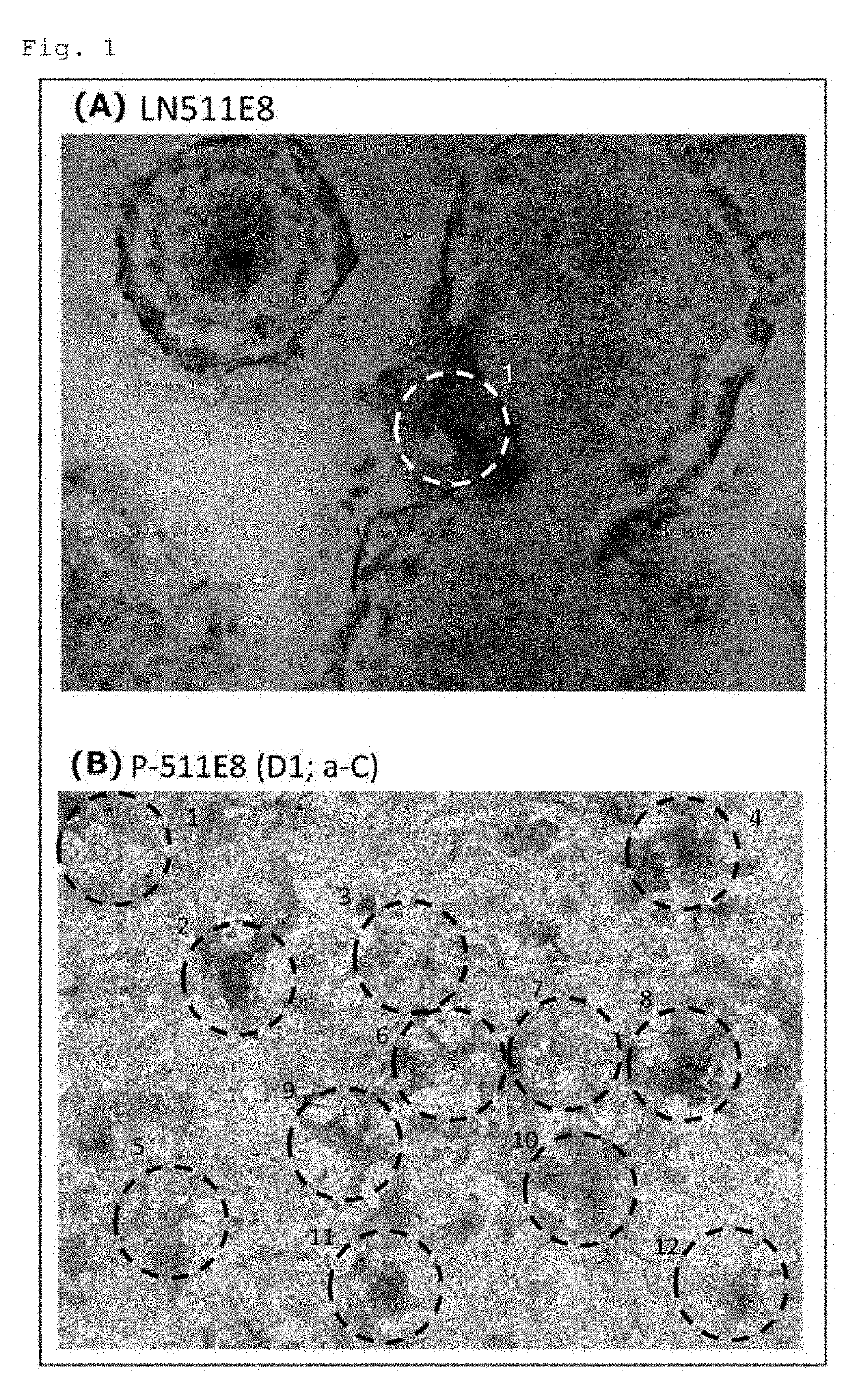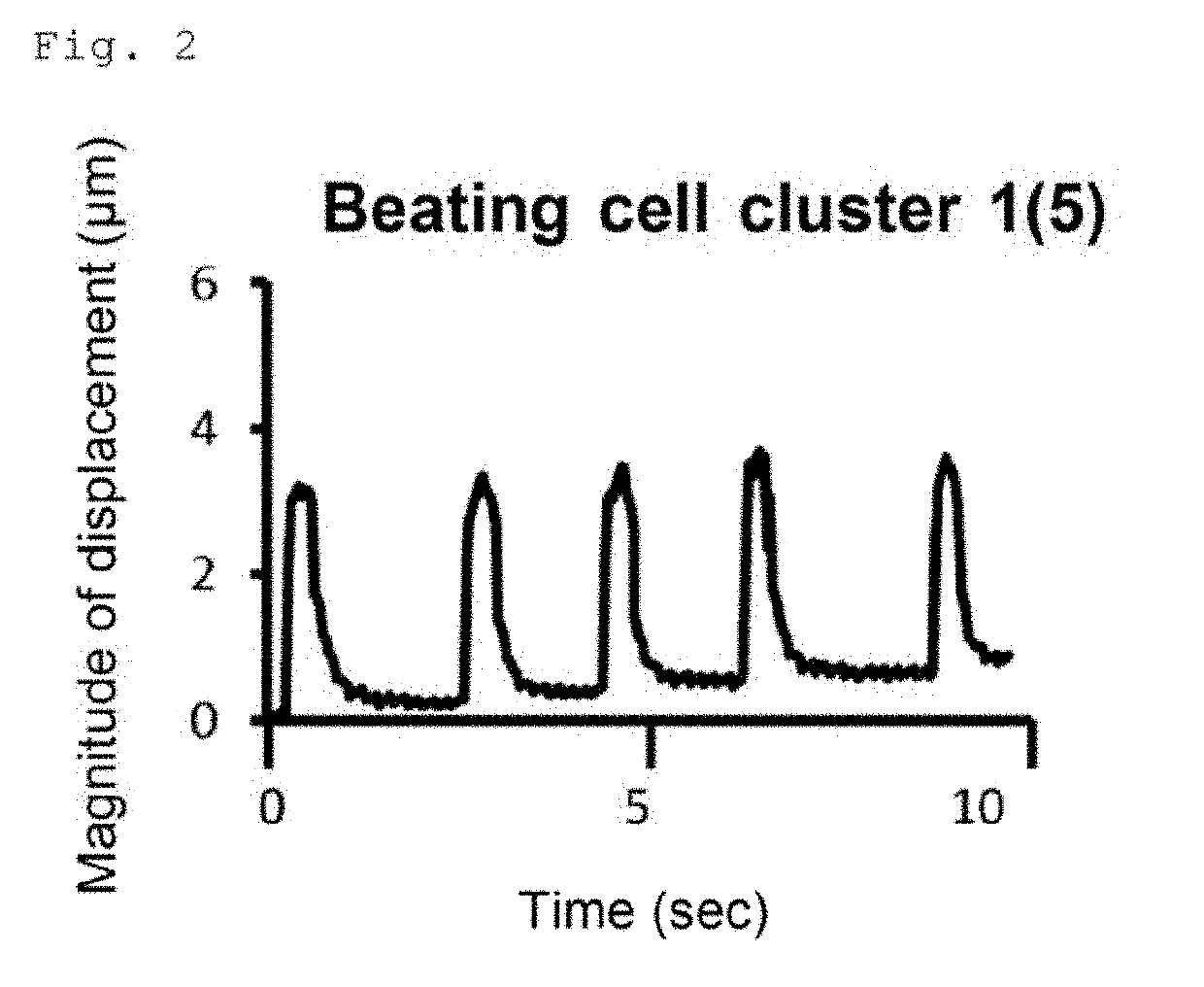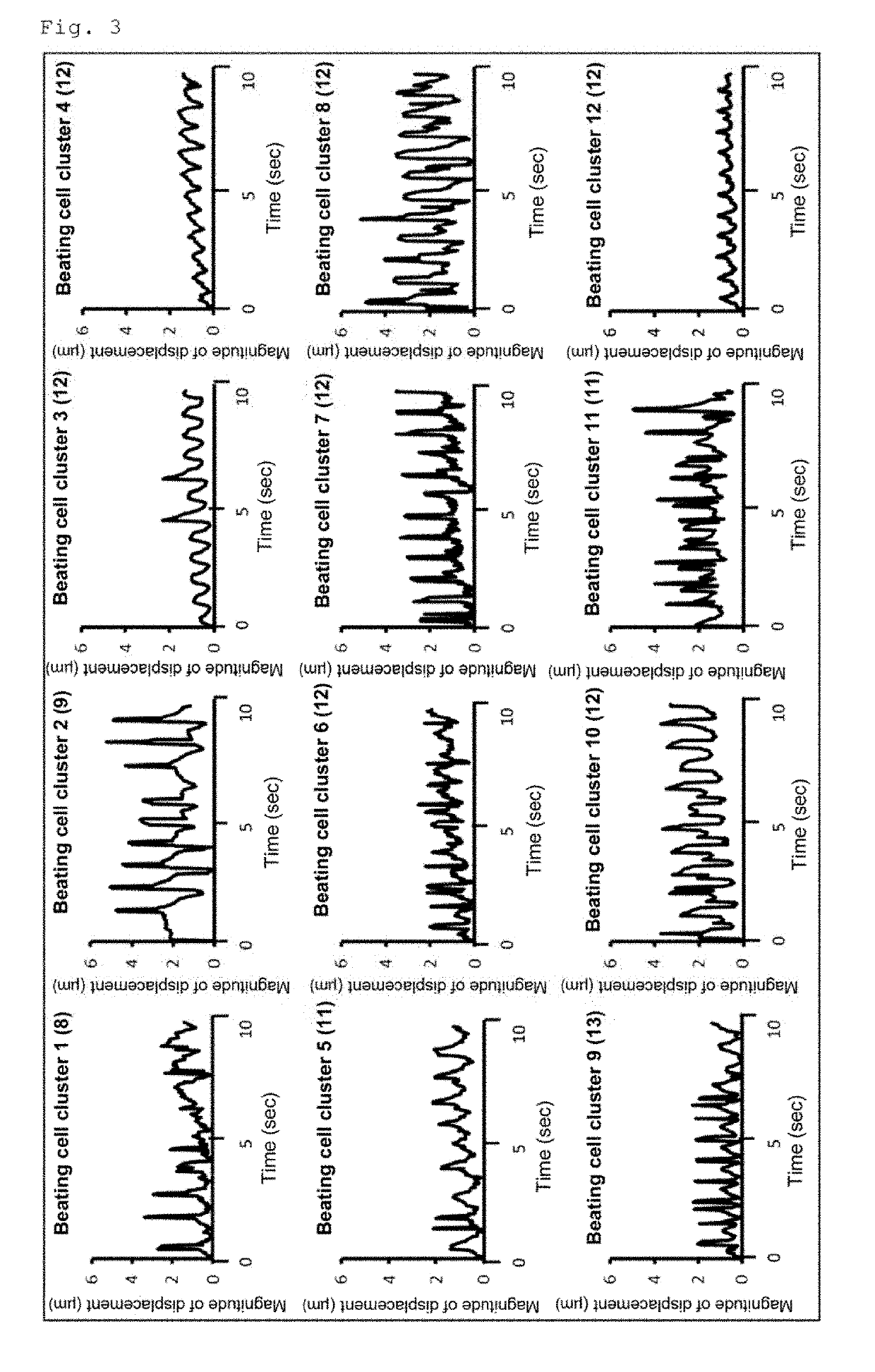Method for inducing pluripotent stem cells to differentiate into somatic cells
a technology of pluripotent stem cells and somatic cells, which is applied in the field of inducing pluripotent stem cells to differentiate into somatic cells, can solve the problems of no established extracellular matrix to enhance the efficiency of selective, and the use of modified laminin described in patent literature 1 as an extracellular matrix, and achieves high efficiency
- Summary
- Abstract
- Description
- Claims
- Application Information
AI Technical Summary
Benefits of technology
Problems solved by technology
Method used
Image
Examples
example 1
[0066]Examination of the Usefulness of a Conjugate of Laminin E8 and Perlecan Domain 1 in Induced Differentiation of Human iPS Cells into Cardiomyocytes
Experimental Materials and Methods
(1) Laminin E8s and Conjugates of Laminin E8 and Perlecan Domain 1
[0067]Human laminin 511E8 (hereinafter referred to as “LN511E8”), a conjugate in which human perlecan domain 1 was fused to the α5 chain C-terminus of LN511E8 (hereinafter referred to as “P-511E8(D1; a-C)”), human laminin 421E8 (hereinafter referred to as “LN421E8”), and a conjugate in which human perlecan domain 1 was fused to the α4 chain C-terminus of LN421E8 (hereinafter referred to as “P-421E8(D1; a-C)”) were used. The LN511E8 was prepared as previously described by Ido et al. (Hiroyuki Ido et al., J. Biol. Chem., 282, 11144-11154, 2007) (see Examples in WO 2014 / 199754 A1). The P-511E8(D1; a-C) was the same molecule as the “Plus#5 laminin E8” described in Examples of WO 2014 / 199754 A1. Its preparation method is as described in WO ...
example 2
[0086]Examination of the Usefulness of a Conjugate of Laminin E8 and Perlecan Domain 1 in Induced Differentiation of Human iPS Cells into Skeletal Muscle Cells (1)
Experimental Materials and Methods
(1) Laminin E8 and Conjugates of Laminin E8 and Perlecan Domain 1
[0087]LN421E8, P-421E8(D1; a-C) and P-511E8(D1; a-C) were used. These were all the same as those used in Example 1.
(2) hiPS Cells
[0088]hiPS cell line 201B7 was used. The 201B7 cell line was engineered to contain a tdTomato sequence at the 5′ end of the initiation codon of the MYF5 locus in the usual manner of homologous recombination using the CRISPR / CAS9 system. Thus, an iPS cell line expressing tdTomato in coordination with the expression of MYF5 (MYF5-tdTomato C3 iPSC, hereinafter referred to as “MYF5-tdTomato”) was prepared. MYF5-tdTomato was confirmed to have a single genetically modified allele.
(3) Pre-Culture of hiPS Cells
[0089]The culture medium in each well of a 6-well plate in which the hiPS cells were maintained wa...
example 3
[0109]Examination of the Usefulness of a Conjugate of Laminin E8 and Perlecan Domain 1 in Induced Differentiation of Human iPS Cells into Skeletal Muscle Cells (2)
Experimental Materials and Methods
(1) Laminin E8s and Conjugates of Laminin E8 and Perlecan Domain 1
[0110]In addition to LN421E8, P-421E8 (D1; a-C) and P-511E8 (D1; a-C), which were used in Example 2, human laminin 111E8 (hereinafter referred to as “LN111E8”) and a conjugate in which human perlecan domain 1 was fused to the α1 chain C-terminus of LN111E8 (hereinafter referred to as “P-111E8 (D1; a-C)”); human laminin 211E8 (hereinafter referred to as “LN211E8”) and a conjugate in which human perlecan domain 1 was fused to the α2 chain C-terminus of LN211E8 (hereinafter referred to as “P-211E8 (D1; a-C)”); human laminin 332E8 (hereinafter referred to as “LN332E8”) and a conjugate in which human perlecan domain 1 was fused to the α3 chain C-terminus of LN332E8 (hereinafter referred to as “P-332E8 (D1; a-C)”); human laminin 4...
PUM
 Login to View More
Login to View More Abstract
Description
Claims
Application Information
 Login to View More
Login to View More - R&D
- Intellectual Property
- Life Sciences
- Materials
- Tech Scout
- Unparalleled Data Quality
- Higher Quality Content
- 60% Fewer Hallucinations
Browse by: Latest US Patents, China's latest patents, Technical Efficacy Thesaurus, Application Domain, Technology Topic, Popular Technical Reports.
© 2025 PatSnap. All rights reserved.Legal|Privacy policy|Modern Slavery Act Transparency Statement|Sitemap|About US| Contact US: help@patsnap.com



